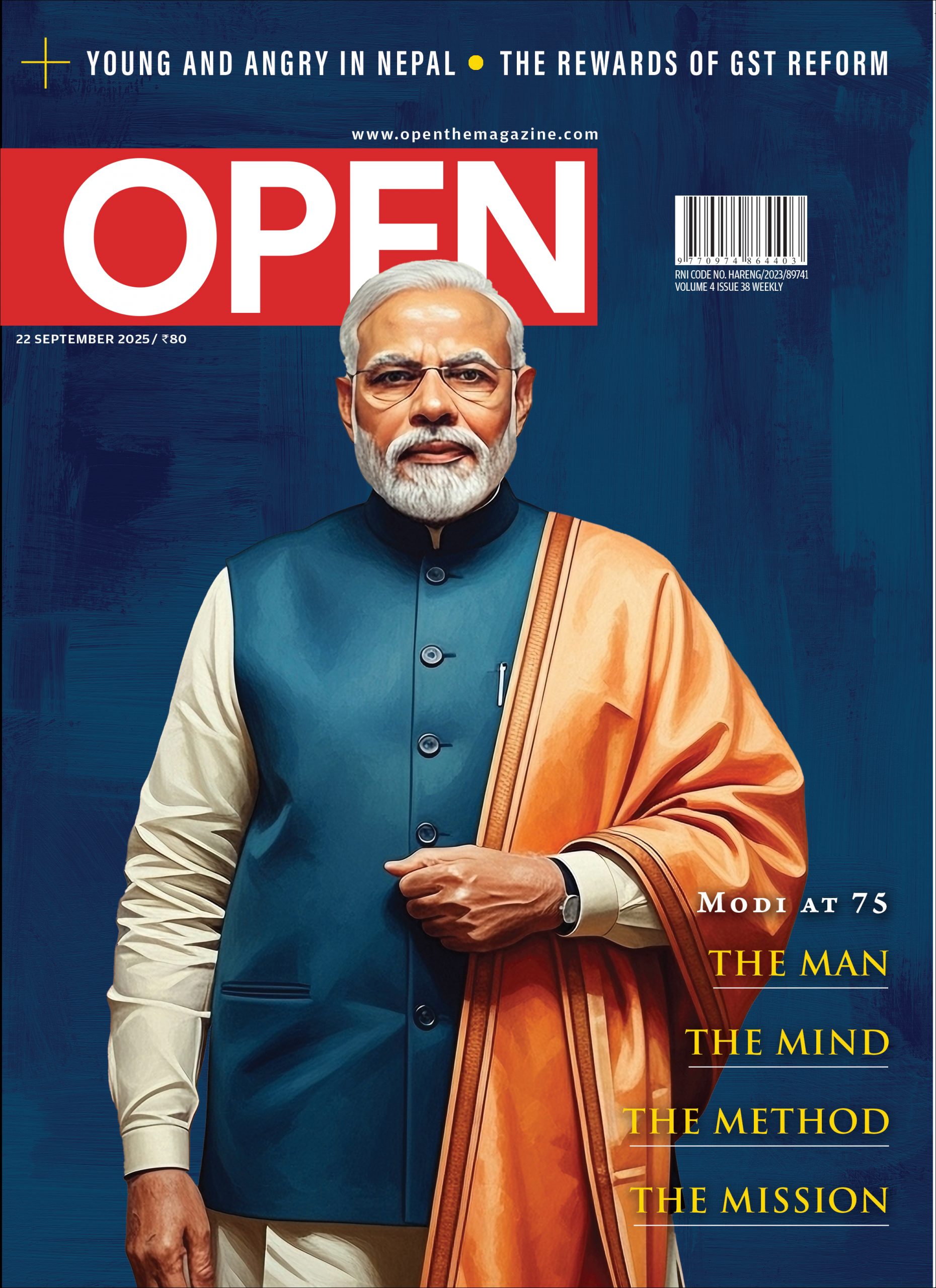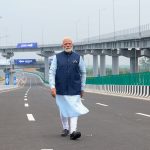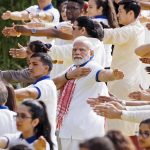Yogi Adityanath: Uses of the Ascetic
A volatile moment in the evolution of BJP
 Siddharth Singh
Siddharth Singh
 Siddharth Singh
Siddharth Singh
 |
23 Mar, 2017
|
23 Mar, 2017
/wp-content/uploads/2017/03/Ascetic1.jpg)
ON MARCH 21ST, Yogi Adityanath rose in the Lok Sabha and delivered a farewell speech. He was courteous to his elders and peers in the House, managing even to prise a wry smile from Mallikarjun Kharge, the combative leader of the opposition. This dulcet performance continued outside Parliament as well. In Lucknow and Delhi, he handled tough questions with aplomb, taking care not to issue even a hint of controversy.
A single week, however, is a deceptive sliver of time in Adityanath’s life. His record of the past quarter century, to put it mildly, has been one of rabble-rousing and polarising speeches and public utterances. Critics even go as far as saying that the Yogi is guilty of hate speech. No one in India’s cloistered liberal circles is willing to believe, let alone hazard a chance, that he will transform from a firebrand mahant into a moderate leader.
His unexpected elevation—he is not a member of the state Legislative Assembly—has now acquired the air of a strategic move. Adityanath and the 2019 General Election are often spoken in the same breath. All this has set alarm bells ringing, from India’s fractured opposition to the conscience-keepers of India’s liberal values.
The big question now is whether the transformation of BJP into a modern conservative party, of the kind seen in Western democracies, has been halted in its tracks. For many years now it was expected that the party would make a break with traditional modes of expressing conservative ideas and instead rely on economic policy as its operating axis. Since March 20th, the chorus of critics who have ruled this out has grown louder.
Modi’s 2014 promises—captured in the catch-all ‘Sabka Saath, Sabka Vikas’ slogan—are dependent on a virtuous economic cycle taking off. This has two parts. One, high economic growth, fuelling a growth of jobs, and the other is the seamless and leak-free transfer of benefits directly to needy Indians. Together, they make for the much derided ‘Achche din’. Modi’s Government has made rapid strides on the direct benefits side. The infrastructure for this task—the JAM trinity—is in place and for many schemes money is being transferred directly with much lower leakages in the system. But the first part of Modi’s economic strategy has got into trouble. Economic expansion on paper is very good: a 7 per cent annual rate of growth sets a scorching pace that most countries in the world can only dream of. But in reality the practical record is lukewarm. The banking system is in crisis and large private companies are in no mood to borrow and invest. As a consequence, there is no sign of the plentiful jobs—especially in the highly-populated states of North India—that are so badly needed to prevent India’s demographic advantage from turning into a nightmare.
Electorally, then, Modi needs an extra option that can neutralise the perceived weakness of his economic record and one that the opposition cannot muster. No sooner did Adityanath’s car enter the government building—where deliberations on the next Chief Minister were entering their final lap—that speculation began about religious polarisation as the cornerstone of the BJP’s 2019 strategy.
“It is an important political signal,” says Milan Vaishnav, a keen observer of Indian politics. At the tactical level, the Yogi is useful to the party. For one, when you don’t have enough economic results to showcase before the next General Election, his presence in a state that holds the key to BJP fortunes in 2019 could consolidate the electoral base. “He keeps everyone in the tent,” Vaishnav adds. For another, Modi also needs time to deliver on his social policy promises. If anything, these are even harder to score on than fixing India’s weak economy. “The Uniform Civil Code (UCC), Article 370—the Constitutional provision that grants Jammu & Kashmir its special status—and Ram Mandir are issues that cannot be handled overnight. Adityanath as Chief Minister sends a signal to individuals on BJP’s right flank and they will be happy,” he says.
If the advantage in the electoral arena looks unassailable, the Yogi’s appointment muddles the party’s ideological plane. Ultimately, this has the potential to endanger the BJP’s role as a pro- market force in the Indian polity. This process, some observers feel, is already on.
The issue is not just about Adityanath as a polarising political figure. That is well known. The problem that he poses for the BJP is structural. Careful observers of the party’s rise—from the first ‘saffron wave’ of the early 1990s—make a clear distinction between the BJP and other parts of the ‘Hindutva ecosystem’. The latter includes the Rashtriya Swayamsevak Sangh (RSS) and Vishwa Hindu Parishad (VHP), among others. While there has always been two-way traffic between the two parts—the RSS regularly ‘loans’ volunteers to do political work in the BJP, for example—a separation is always maintained. If one wants to do political work full-time, absorption into the BJP is the only way out. Modi himself is the best example of this division of labour. This allows a balance between two difficult tasks: the BJP can focus on the task of winning legislative majorities, something that requires a degree of ideological flexibility, given the constraints imposed by India’s political and Constitutional realities. At the same time, the RSS and VHP can maintain ‘ideological purity’ as they don’t have to make compromises like the BJP.
The Yogi’s elevation breaches this division. To be sure, this is not the first time the BJP has used a religious figure in politics— Uma Bharti, a current member of Modi’s Council of Ministers— is another example. But the Yogi is not just another godman in politics. As the head of the Gorakhnath math, having succeeded his mentor Avaidyanath in 2014, he represents a major tradition in Hinduism. As of now, he is unique in the array of BJP leaders as one who is not only a chief minister but also a major religious figure. He decisively tips the balance in favour of the BJP’s original conservatism, the kind seen during the 1980s.
The BJP can focus on the task of winning legislative majorities, something that requires a degree of ideological flexibility; the RSS and VHP can maintain ‘ideological purity’ as they don’t have to make compromises like the BJP
The political outlook that Adityanath symbolises was the driving force behind the party’s gains—socially and politically—in the 1980s and 90s. That was a period marked by anxiety for the Hindu middle-class. The Meenakshipuram conversions (1981) stirred these feelings. The legislative undoing of the Shah Bano judgment (1986) delivered a body blow to the claims of secularism as it was practised. The sudden surge in BJP’s support base, followed by its explosion after the Ayodhya movement—in which young Adityanath was a major participant along with Avaidyanath— was the result of these developments.
It is not accidental the Adityanath was part of the Hindutva movement. Within this mobilisation, the branch represented by him and his mentors has a history of autonomy from mainstream political concerns. The Gorakhnath math and its mahants are legatees of a tradition that is militant to the point of even opposing the BJP for the sake of the Hindu cause. Adityanath has a record of opposing the party—going as far as putting up independent candidates in elections in the Gorakhpur region. In recent days, his ability to stand up to the party and its top brass at the Centre has been a matter of heated debate.
SINCE HINDUTVA GAINED prominence in the early 1990s, however, much has changed for the BJP. A simple illustration shows that. In 1985, the median age of an Indian was 30 years. This individual was born in 1955 and had probably heard enough about the Partition, riots and the bloodbath that accompanied Independence. By 2014, when Modi became Prime Minister, the median age had come down to 25 years. An entire generation had passed away and the new generation has virtually no connect with past events and the concerns that motivated the 1980s’ generation that also witnessed the Ayodhya movement.
The ‘second saffron wave’ that lifted Modi to power is thus different and finds itself in a very different India. Its concerns are aspirational—jobs, a better life and prospects that eluded most people of an earlier generation. For them, the kind of rhetoric Adityanath indulges in is a far cry from the kind of expectations of modernisation that Modi promised.
So has BJP lost the ideological plot?
“Matters are more complicated than a simple economic modernisation versus religious conservatism distinction,” Tariq Thachil, associate professor of Political Science at Vanderbilt University, tells Open. Thachil is a specialist on the strategies BJP has used to expand its social base, transforming it from a ‘Bania- Brahmin’ party of the 1980s into a much more diverse, almost centrist, political formation.
The results of the 2014 General Election illustrate this ideological dilemma. In almost every social or religious category of voters, the BJP outpolled the Congress. It was notable that BJP’s vote share of Dalits and Tribals was higher than that of the Congress. This was apart from its ‘organic’ advantage of having upper-castes and the middle-class on its side. The only exception was Muslims. The BJP received just 8.5 per cent of this vote, while 91.5 per cent went to the Congress and other parties combined.
This is the dilemma that confronts the BJP. Its social base dictates that it be careful while effecting economic reforms for it is hard to quantify exactly who loses from economic reforms and who gains. The net result is a search for some kind of status quo on this front. In contrast, the demand from the party’s more vocal urban supporters is for more reforms, as this section feels that is the way to more jobs and higher incomes.
“It is not just calculating the political benefit from what one gains by spending the last rupee, but also the losses [from reforms] are felt more acutely while the gains are more diffuse,” Thachil says.
Its ‘reform’ credentials notwithstanding, the BJP has always played a balancing act through its history. To cite two such trade-offs, it has taken support from the RSS but always calculated how much leeway it has to give on Hindutva in return. Similarly, it has struck a trade-off between economic liberalisation—that benefits its middle-class constituency— with better governance that helps its lower-caste base.
It is very tempting to evaluate anyone like Adityanath in terms of some binary model—economic reforms versus caution in such policymaking or religious polarisation versus a more ‘secular’ approach— the reality is more complex. “You have one party having an edge on governance/growth (Modi’s vikas persona) but when that edge is not sufficient, the party needs to compete with rival parties on social identity. To undercut the social coalition of the rival parties based mainly on caste, religion becomes a different unifying coalition. The combination of the economic dimension and social identity becomes a winning strategy electorally speaking,” argues Maitreesh Ghatak, professor of Economics at the London School of Economics.
These competing pulls and pressures experienced by the BJP are matters that can’t be evaluated in a simple ‘Left versus Right’ model of politics that has been the stock of political analysis for a very long time.
Second, while the Yogi may or may not engage in inflammatory rhetoric, this is unlikely to serve him or his party well. Rather, it is likely his ‘religious advantage’ that cuts across old caste divides won’t pay if he is not able to deliver better governance. Thachil highlights this point and says that “lower castes will defect from the BJP and not the upper castes in case Adityanath is not able to deliver on crucial issues like law and order and governance”.
Finally, as the BJP becomes a more ‘centrist’ party in terms of policymaking, it gets into murky territory ideologically. The purity of ideology retains its charm for the party and its ecosystem and serves a stern warning that unless it upholds this distinctive quality, the danger of a Congress-like future is unavoidable. Yet, the need to widen the social base of the party forces it to be a bit flexible on this count. Bringing in someone like Adityanath is a powerful signal to its supporters that it will stick to its original moorings.
Consider the BJP’s support base as two distinct circles. One circle is the traditional set of supporters who believe in Hindutva and for whom their Hindu identity over- rides other concerns. The other circle is that of its young, modern, supporters who are more focused on economic questions. “The empirical question to ask is how much of an overlap is there between the two circles?” asks Vaishnav.
Statistical analysis, the rage among new-fangled ‘electoral strategists, can deliver a response that changes every week based on the quirks of those who are subjected to such tests. But watching the mahant of Gorakhpur as he lovingly feeds his favourite cows, his bhakts watching adoringly, offers a different, more intuitive answer. The circles overlap greatly. Uttar Pradesh said as much two weeks ago and the BJP agrees. The rest, to paraphrase a Hindu expression, is political maya.

/wp-content/uploads/2025/09/Cover-Modi-scaled.jpg)













More Columns
I Missed A Flight Thanks To Robert Redford, Plus He Took My Magazine! Alan Moore
Robert Redford (1936-2025): Hollywood's Golden Boy Kaveree Bamzai
Surya and Co. keep Pakistan at arm’s length in Dubai Rajeev Deshpande